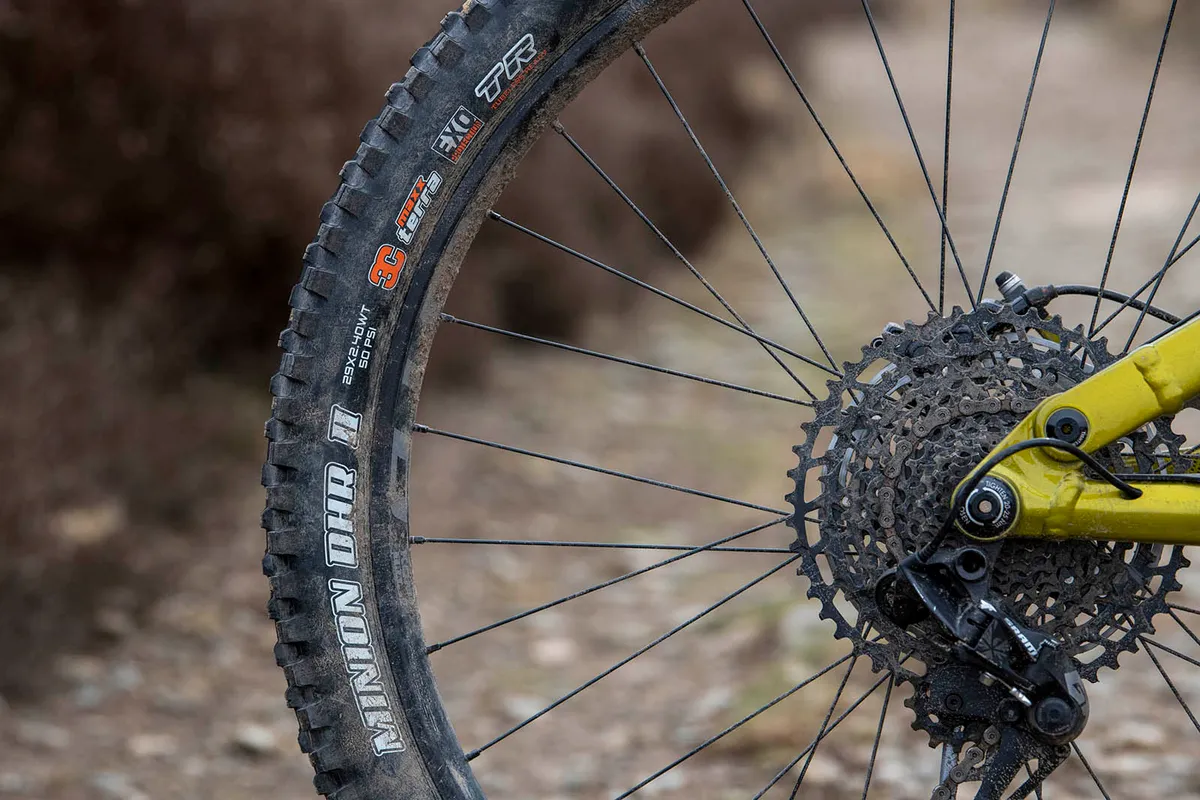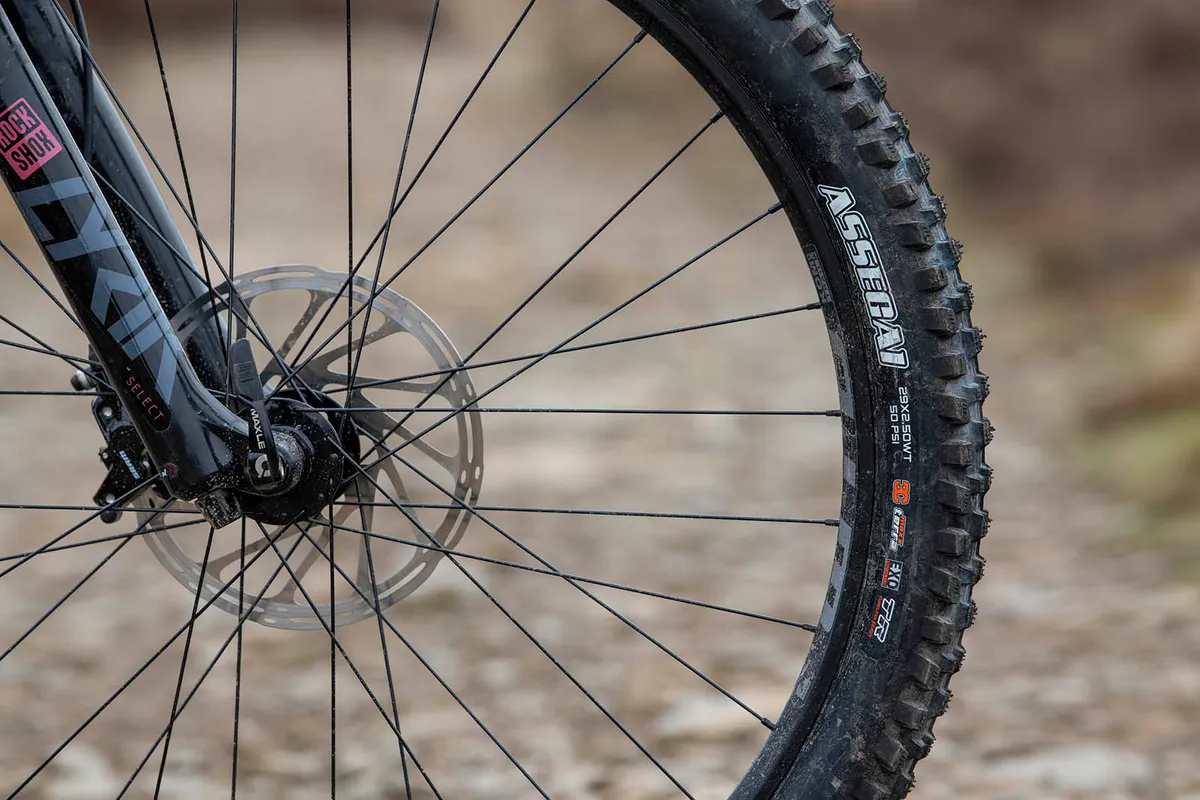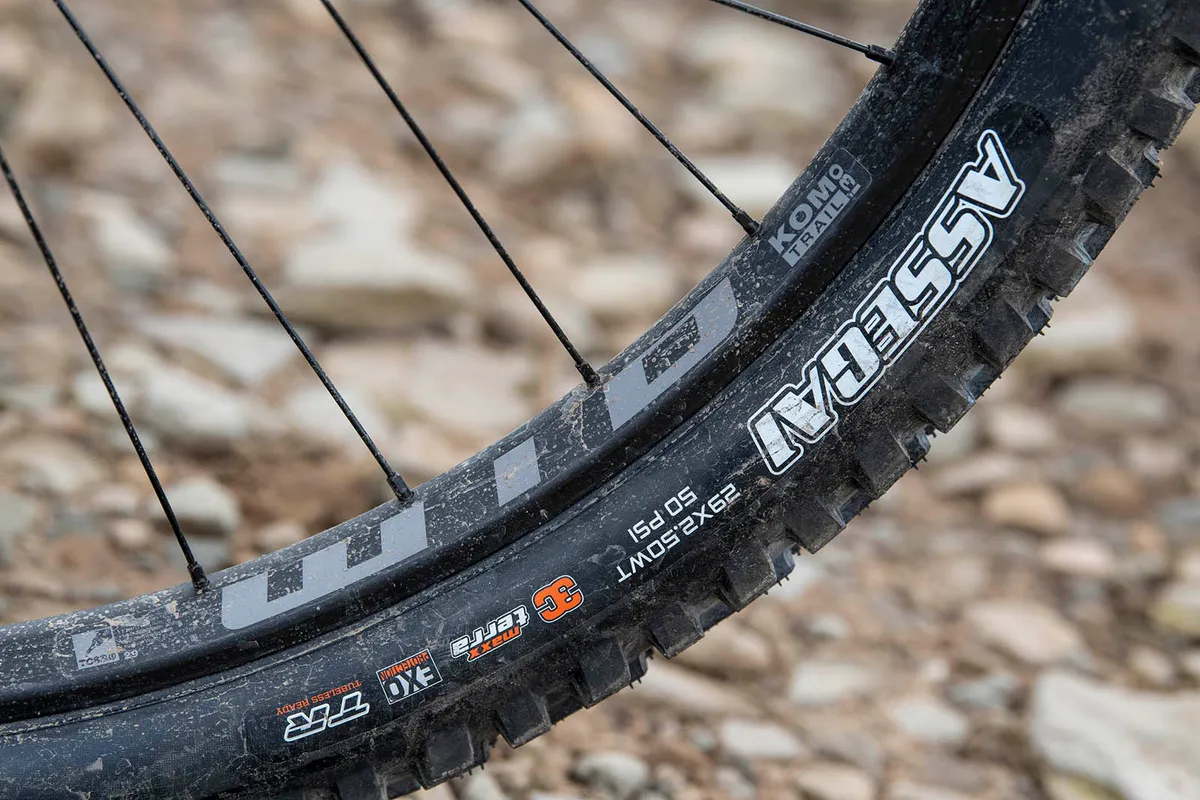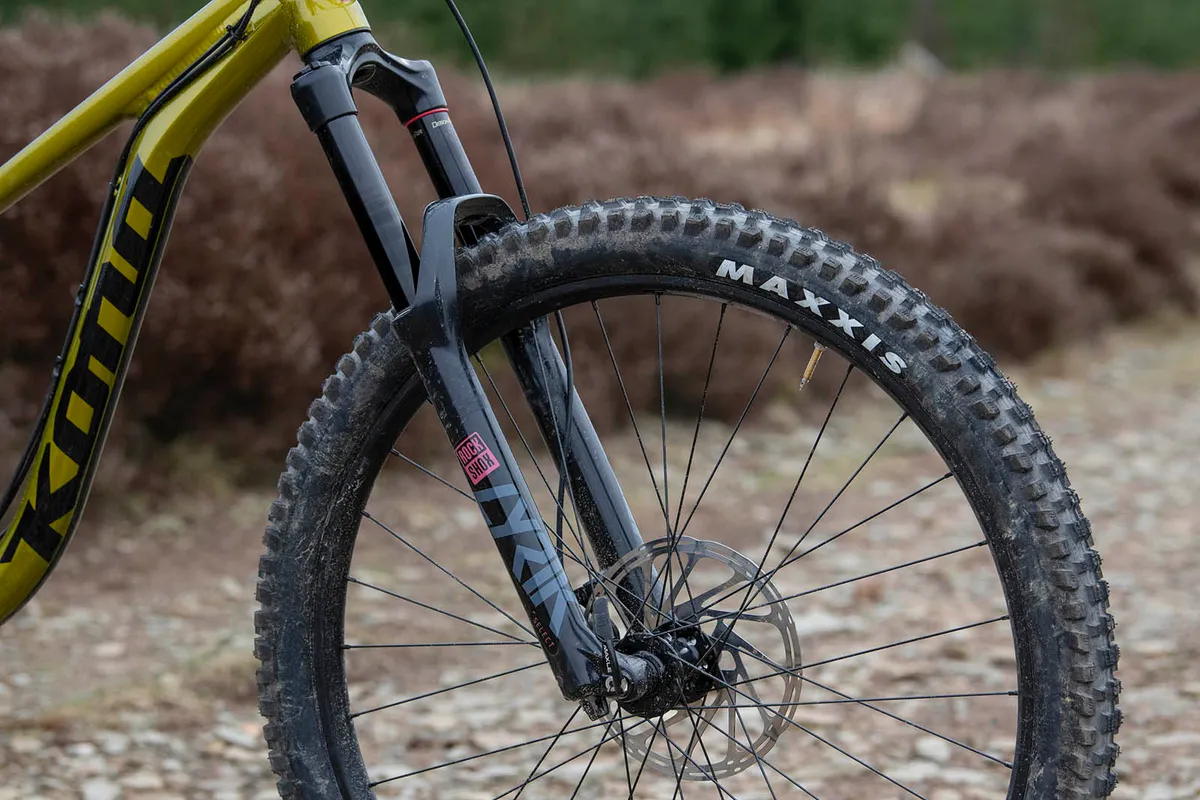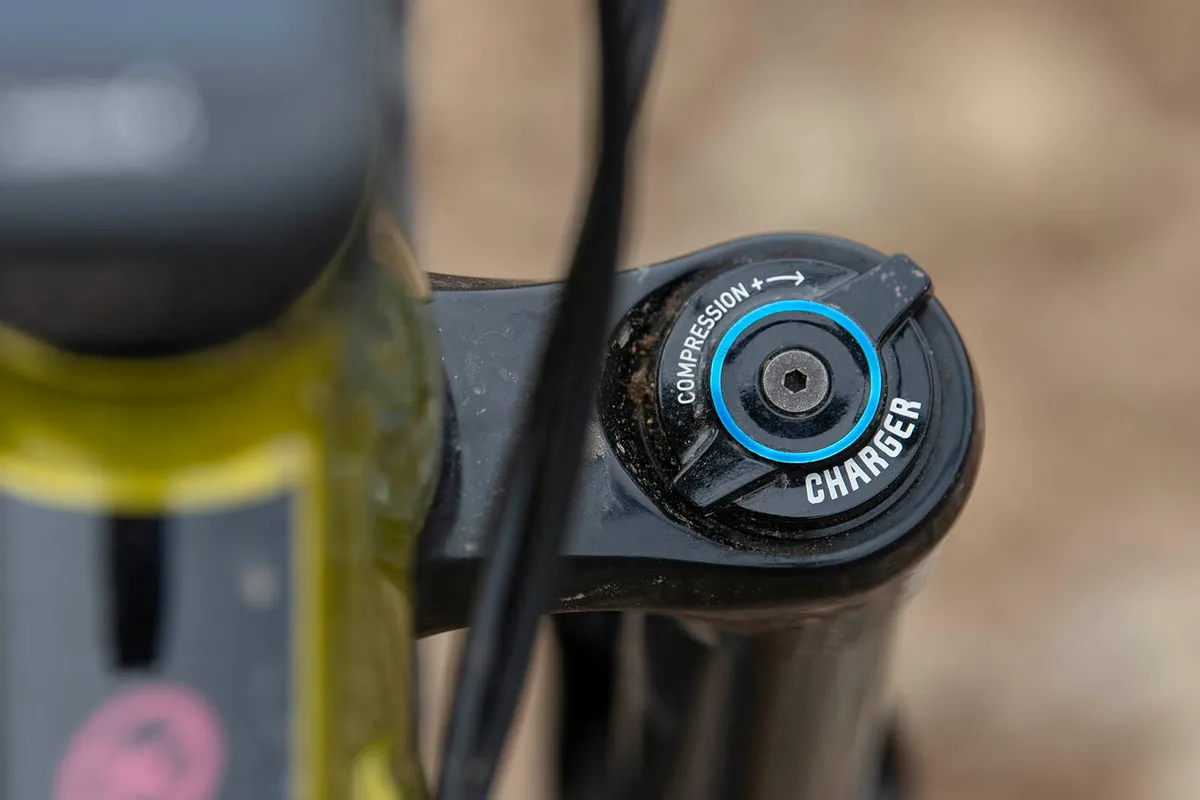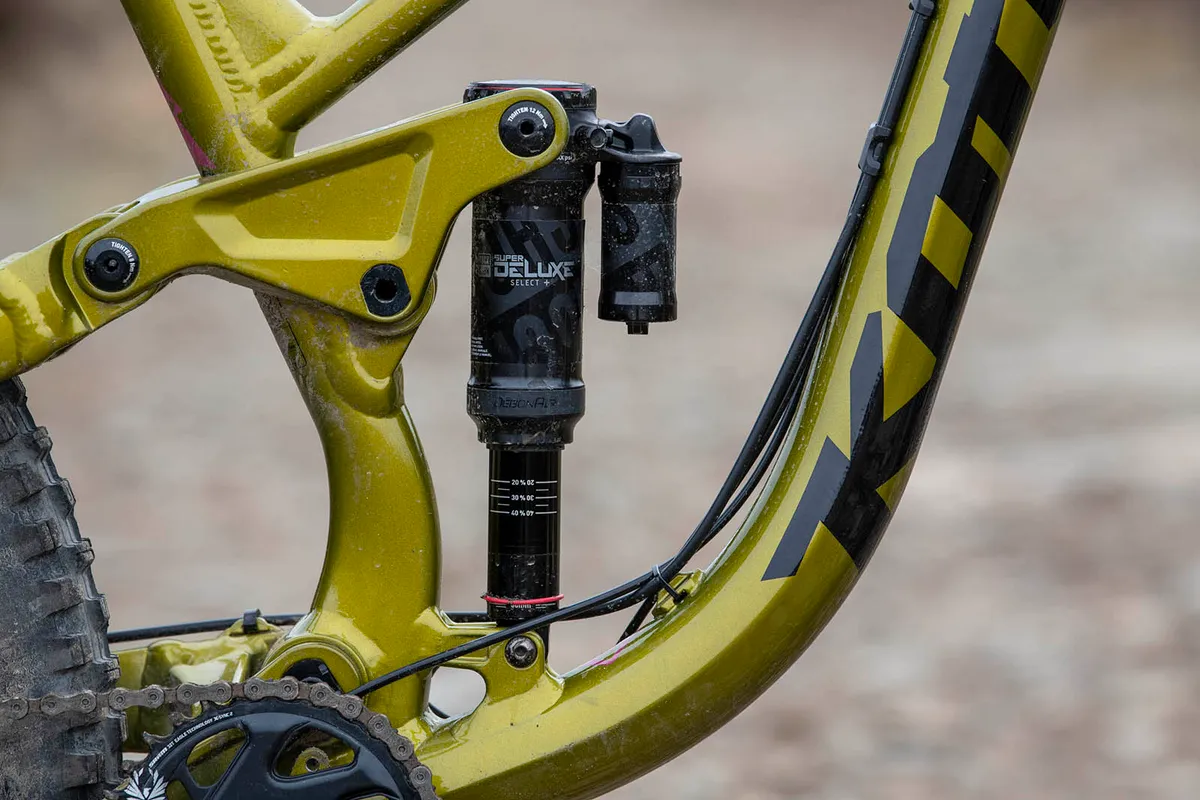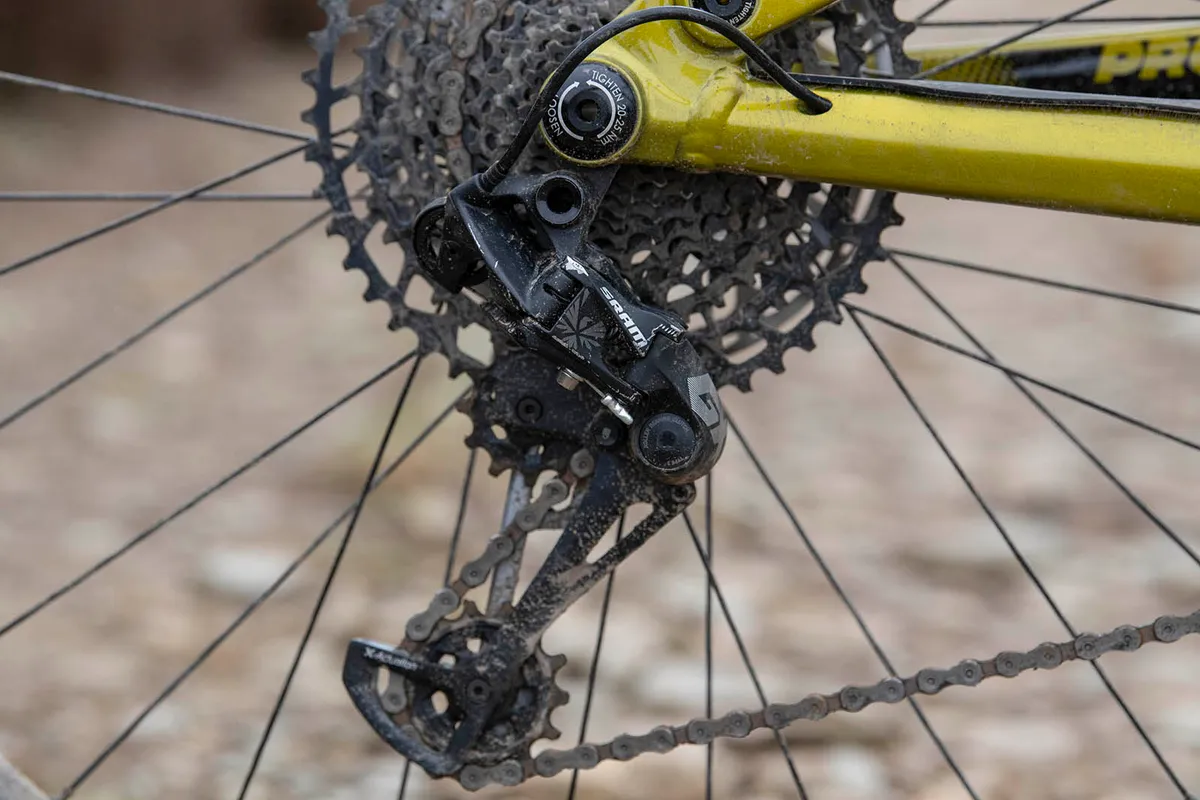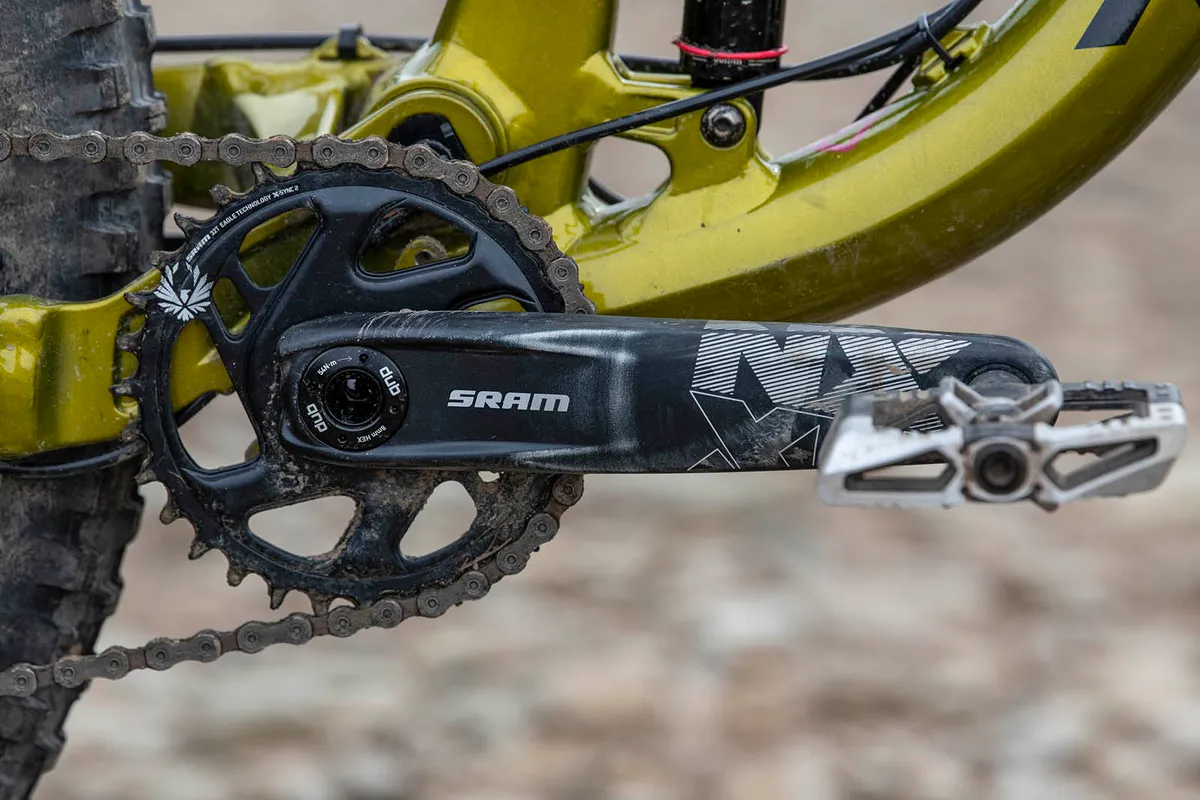Kona’s Process has been a staple in its line-up for many years now but has changed significantly over that time. Previously, it was the Process 153 that was hailed as its all-out enduro machine, but Kona has recently released the Process X, a bike that features 161mm of rear-wheel travel and is built around a 170mm fork up front.
As the Process X is currently only available in carbon, the cheapest of the two models costs £5,499, putting it well out of reach of our Enduro Bike of the Year test budget. So, instead, we've looked to the Process 153 which offers slightly less travel but still comes with a burly build and similar intentions.
Kona Process 153 DL 29 frame and suspension details
The Process 153 DL 29 is made from 6061 butted aluminium tubing that is sculpted and formed into the bike you see before you, and I think it looks great.
A heavily curved down tube meets the top tube very early on to form a massive weld area before fixing to the head tube – this does make the front section of the mainframe appear a little ‘pinched’ at first but the look soon grows on you.
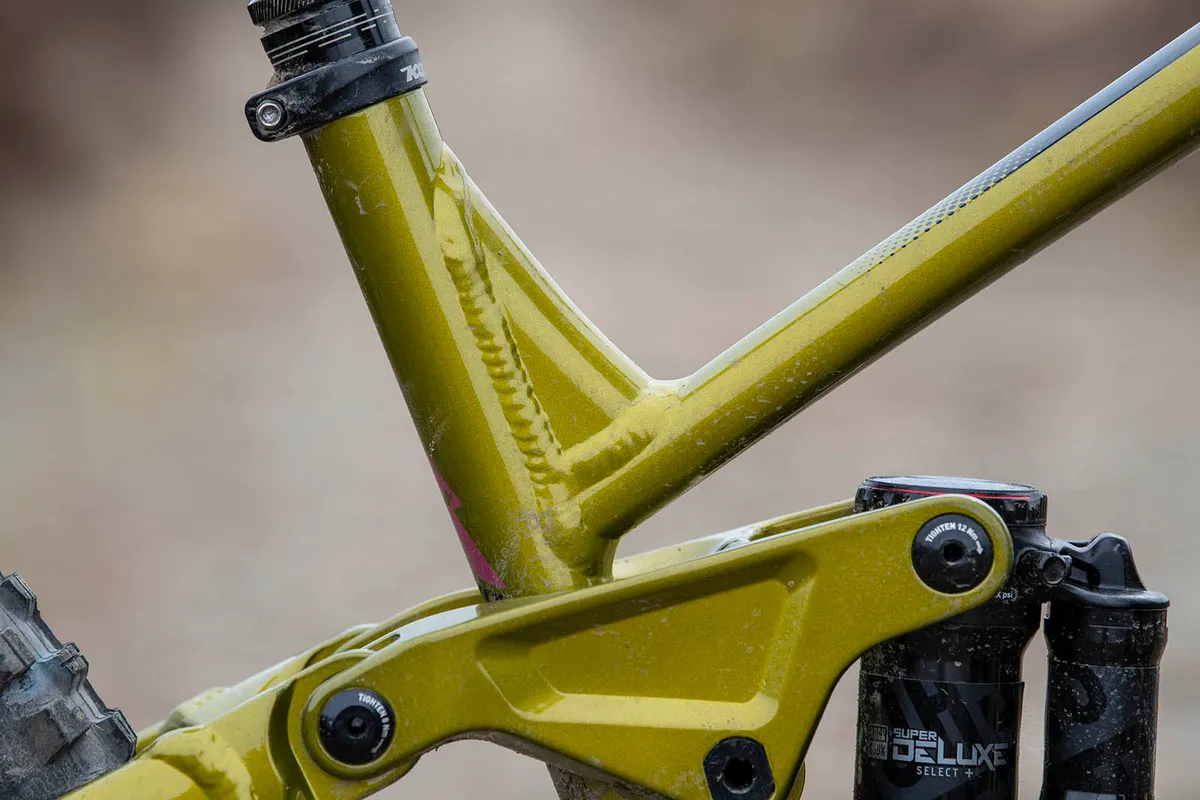
The asymmetric chainstays connect to the seatstays via a pivot that sits just above and in front of the rear axle. These then attach to the chunky rocker that drives the shock.
This system, dubbed Kona’s ‘Beamer’ platform, has been used by the brand for a long time now but more recently has been refined for the modern needs of aggro trail riders and enduro racers.
A trunnion mounted RockShox Super Deluxe Select+ shock manages the 153mm of rear-wheel travel.
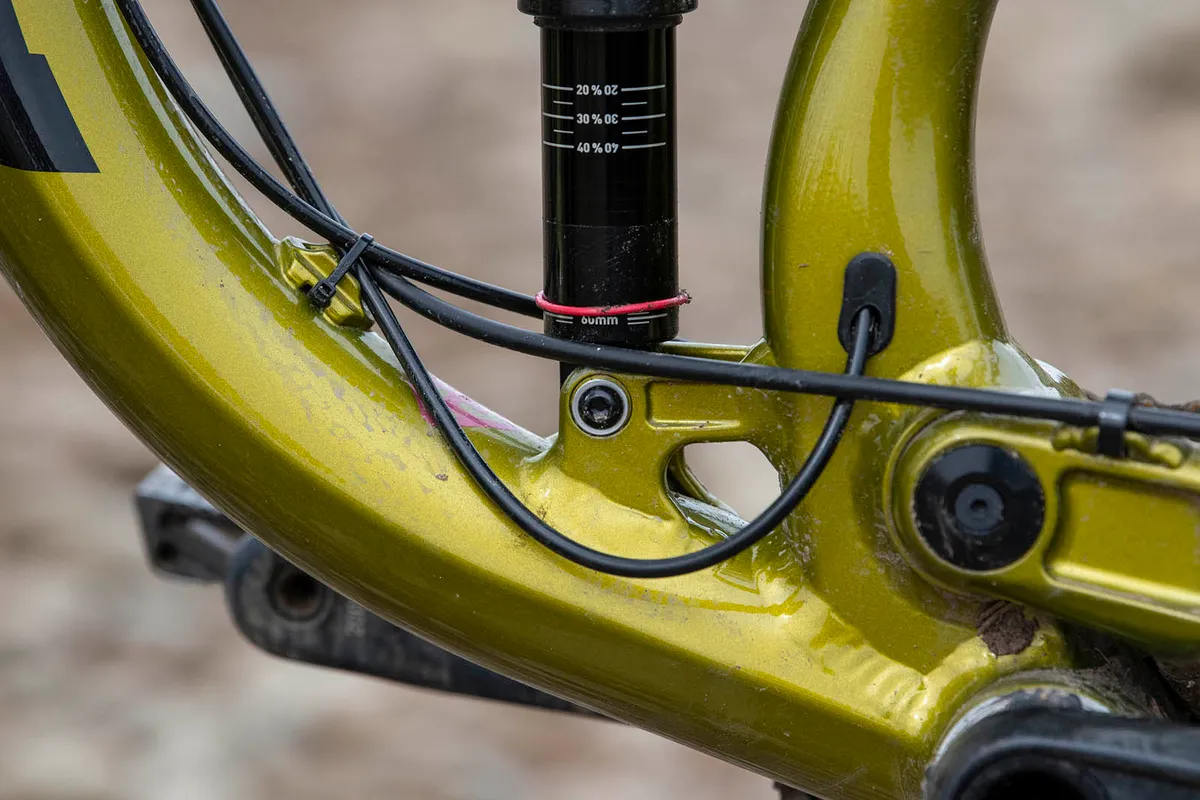
Cable routing is nearly all external, save for the dropper cable and a small length of gear cable that runs through the driveside chainstay.
While this should help when it comes to that all-important maintenance, it doesn’t look the neatest as it criss-crosses just in front of the lower shock mount, and you’ll need to keep it in check to stop the cables from contacting the shock shaft or bulging out towards the cranks.
That said, after I spent all of two minutes fiddling with the cables, I had zero issues with them throughout testing.
Kona Process 153 DL 29 geometry
Kona has designed the Process 153 DL 29 around a 160mm travel fork with a 42mm offset and it's has done a great job with the geometry – it’s close to that of the Whyte G-180 and Nukeproof Mega, two bikes I’m a massive fan of.
In fact, the reach of the Process 153 DL 29 is identical to both the Whyte and Nukeproof at 455mm (size medium), which is great for a medium-sized bike and certainly plants it towards the more progressive end of the geometry market.
A slack 64.7-degree head angle should help with high-speed stability and confidence, while the steep 77.1-degree seat tube angle (measured with the saddle set to my pedalling height) is designed to keep climbing efficient but, more importantly, comfortable.
There’s 30mm of bottom bracket drop which leaves it sitting at 345mm off the floor – it’s not the lowest bike out there but not overly tall either.
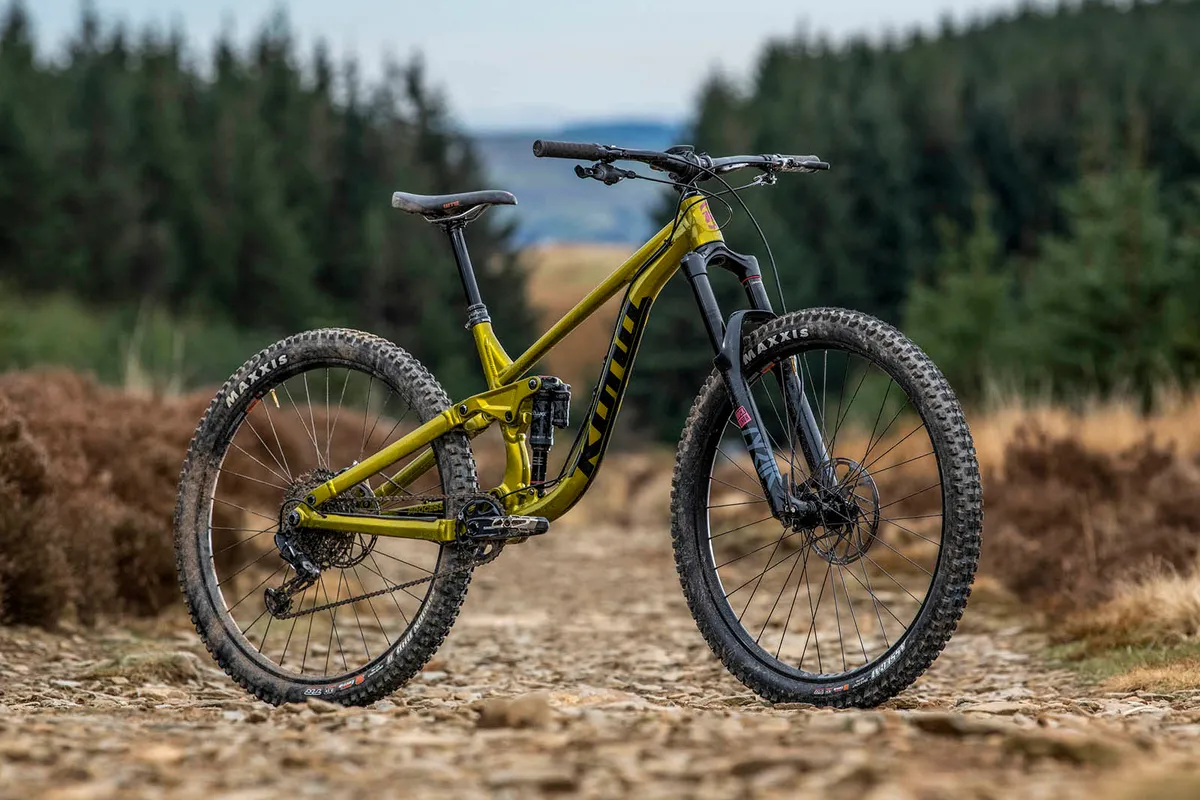
A front centre of 782mm coupled with a rear centre/effective chainstay length of 435mm adds up to a wheelbase of 1,217mm.
If you’ve glanced at the geometry chart below, you’ll spot that sizing is limited to just medium, large and extra-large. If you do want a size small, it’ll be the standard Process 153 which uses 650b wheels and there’s no direct DL build equivalent available, unfortunately.
| | M | L | XL |
|---|---|---|---|
| Seat angle (degrees) | 76.9 | 76.9 | 76.9 |
| Head angle (degrees) | 64.5 | 64.5 | 64.5 |
| Chainstay (cm) | 43.5 | 43.5 | 43.5 |
| Seat tube (cm) | 41 | 45 | 8.5 |
| Top tube (cm) | 59.9 | 62.8 | 66.7 |
| Head tube (cm) | 9.7 | 10.8 | 11.9 |
| Fork offset (cm) | 4.2 | 4.2 | 4.2 |
| Bottom bracket drop (cm) | 3 | 3 | 3 |
| Bottom bracket height (cm) | 34.5 | 34.5 | 34.5 |
| Wheelbase (mm) | 1,215 | 1,244 | 1,284 |
| Standover (cm) | 70 | 71 | 72 |
| Stack (cm) | 61.5 | 62.5 | 63.5 |
| Reach (cm) | 45.5 | 48 | 51.5 |
Kona Process 153 DL 29 specifications
The Process 153 DL’s spec is decent but could be improved slightly in some areas. Considering the price and what the Process 153 is up against elsewhere in the market, I’d have hoped to see a full SRAM GX Eagle drivetrain rather than the mix of GX, NX and SX transmission used here.
While you do get a GX Eagle derailleur, which is a plus as it’ll work with the wider range 10-52t cassette should you decide you ever want to upgrade, Kona specs the cheaper 11-50t NX Eagle cassette.
Not only does this offer a slightly narrower gear range, but it’s also pretty heavy, too. It also means that although you won't need to replace the derailleur if you do make the move to a pricier Eagle cassette, you will need a new freehub body. The Process 153 DL also uses an NX Eagle shifter, NX Eagle crankset and an SX Eagle chain.
The tyres are some of my favourites, though. The Maxxis Assegai up front has proven its worth in a multitude of conditions and on a variety of terrain.
It’s a similar story for the Minion DHR II at the rear. Both tyres use the 3C MaxxTerra compound and come in the EXO casing. Ideally, I’d prefer to see a tougher EXO+ casing rear tyre on the Process 153 DL 29, just as Kona specs on the longer travel Process X.
RockShox supplies both the fork and shock. The Super Deluxe Select+ features a handy lever to firm it up should you need to make things feel a little more efficient on long climbs or when tackling lengthy stretches or tarmac.
Up front the Lyrik Select fork uses the Charger RC damper, rather than the Charger 2.1 RC damper found on the Select+ model. The difference between the two is subtle but noticeable, but by no means a deal-breaker.
SRAM’s G2 brakes are decently powerful and predictable, and provided consistent stopping throughout testing. They do feel a little less potent when riding longer, steeper trails compared to SRAM’s Code stoppers, though.
Kona Process 153 DL 29 ride impressions
The Process 153 DL 29 was easy to set up, and once I’d set the sag to 30 per cent at the rear, I made no changes to the spring pressure.
It was a similar story with the fork, and I never needed to play with spring or rebound settings after my initial shakedown ride. Some adjustment was needed with the rear shock rebound setting, but more on that later.
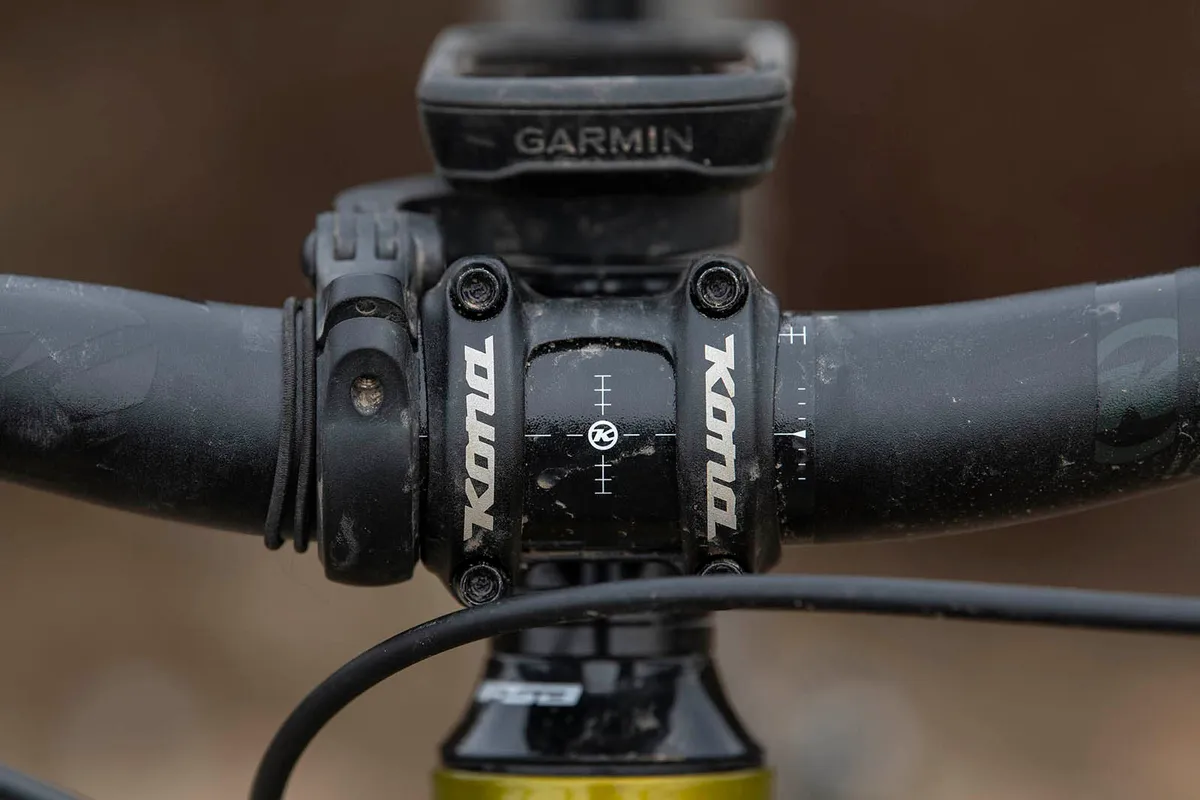
I rode the Process on a wide variety of trails and settings, from steep, natural trails riddled with roots, rocks and ruts to higher speed bikepark trails. These more manmade tracks offer a faster pace and generally heavier, more frequent hits with a lot more rocks to contend with.
Kona Process 153 DL 29 climbing performance
The steep seat angle helps to sit you in a really comfortable climbing position. This, combined with the reasonable 599mm effective top tube length and 40mm stem, offered enough room to prevent me feeling cramped on longer ascents and helped to keep enough weight over the front end of the bike to stop any pesky front wheel lift if you do attempt any really steep pitches.
When sat down and spinning a gear, the suspension remained reasonably neutral, with not too much in the way of pedal-induced bob sapping energy unnecessarily.
It remained controlled enough that I rarely toggled the shock’s lever to firm the back end up. That said, when putting power down, delivery through the rear wheel didn't feel quite as direct as it does on other bikes.
Shifting with the mixed NX/GX Eagle gearing was smooth throughout testing and the range of the 11-50t cassette proved to be broad enough in nearly all situations.
I’ll admit that when it came to those slow, last-run-of-the-day climbs, I did, on occasion, miss the bigger 52t sprocket found on the pricier GX Eagle cassette. However, I still rode up every climb I pointed the Process 153 towards.
Kona Process 153 DL 29 descending performance
The Process feels natural and confident from the get-go with a nicely centred ride position that’s easy to get acquainted with.
When faced with mellower trails, the Process 153 DL 29 doesn’t feel quite as urgent or as eager when compared to the best in the category and needs a bit more rider input to gain and maintain speed.
It feels agile enough, but the more planted suspension means it’s not as poppy or playful as some, instead preferring to stay glued to the trail.
Give it a bit of muscle and you can chuck it around though, and those 435mm chainstays certainly help when you want to loft the front wheel up into the air.
On some high-speed trails where you hammer into heavy compressions at full chat, I felt myself getting kicked from time to time, with the back end lifting up off the trail and requiring me to counter it with a shift of my body weight.
While this isn’t unusual, riding the same section of trail on other very similar bikes didn’t elicit the same response. I put this down to the digressive rebound tune used on the rear shock which allows it to extend really quickly after a sudden, heavy compression.
Increasing the rebound damping helped with control, though, and I still managed to keep the rear end sufficiently fast and active without compromising on control.
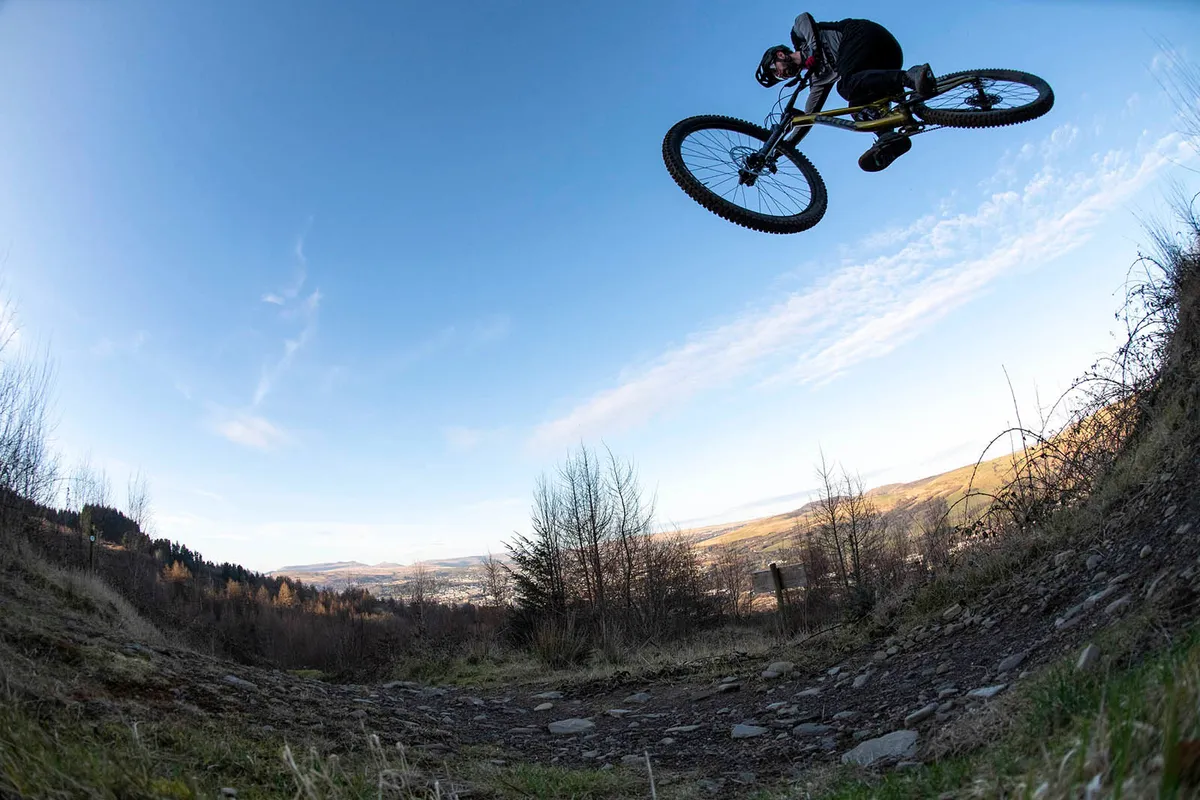
When the gradient steepens and things become more technically challenging, the Process really starts to shine.
While it may not feel like the most dynamic bike when trucking along flatter trails, pitch it into something a little steeper and chunkier and this bike really comes into its own.
That well-shaped geometry strikes a good balance between stability and manoeuvrability, offering up enough room to ensure things never feel nervous or twitchy, but it doesn’t feel so big as to warrant hefty rider weight shifts in order for the bike to be reactive or move beneath you.
The supple back end soaks up the heavy hits with impressive control and still offers enough feedback to ensure you can feel what’s going on beneath the tyres as you pick your way through the chaos.
While 153mm of rear-wheel travel might not sound like much compared to some, Kona has done a fine job ensuring the tail end of the stroke feels impressively smooth as the bike reaches full travel, so much so it feels like you have a little more on tap.
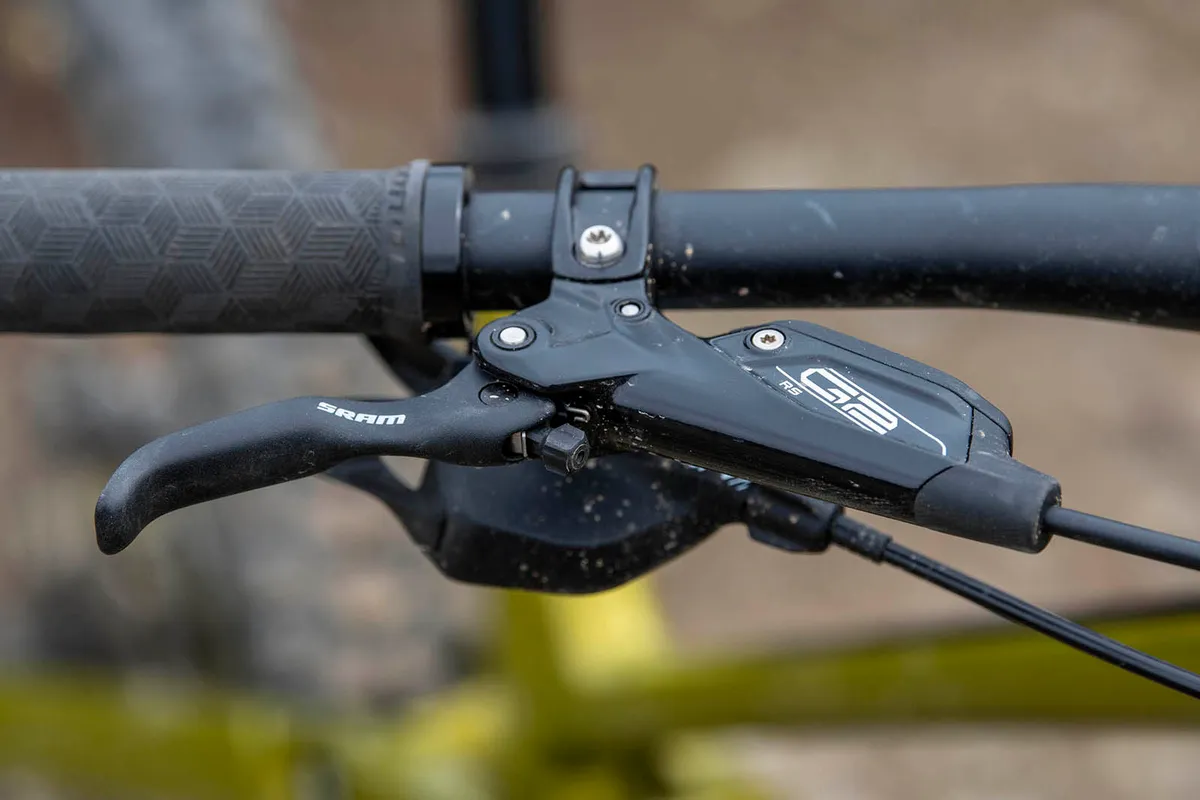
This sensation and the control the Process exudes on steeper trails really does push you to ride faster and harder, and it’s here where I really started to miss the bigger, more powerful Code brakes towards the end of each run.
The G2 brakes still offer a decent amount of power, but on prolonged descents, the Codes are certainly easier on your hands, making slowing down that bit easier.
So, while the Process 153 DL isn’t quite perfect, it’s still a great bike to ride in the right terrain. A couple of choice spec swaps would help elevate performance and bring it closer in line with the similarly priced bikes built with the same intention.

Kona Process 153 DL 29 bottom line
My time aboard the Process 153 DL 29 was certainly enjoyable but it’s a bike that does lack in certain areas.
The spec is decent but not great when you consider the value. Thankfully, the geometry offers up some great proportions that make you feel at home instantly.
Okay, on flatter trails the Process doesn’t feel like the sprightliest bike at times, and that lethargy means as a rider it’s down to you to put the extra effort in to maintain momentum. It’s still relatively manoeuvrable and agile, but not quite as playful as some bikes that have even more travel.
Get it stuck into something steep and chunky though and the Process is more than at home.
Thanks to…
A massive thank-you to BikePark Wales for granting us access to its trails despite the bike park being closed to the public.
Cheers also to Fox clothing for sorting the kit for the photo and video shoots and Garmin for sorting us out with bike computers to log the many miles of testing.
And not forgetting Muc-Off, for its help keeping the bikes washed and lubed throughout testing.
The contenders | Enduro Bike of the Year
With 150mm to 180mm of travel, enduro bikes are designed to be hurled down the roughest downhill tracks but still be pedalled back to the top. The best enduro bikes are still fun when riding less full-on terrain, too.
The following bikes were shortlisted for our Enduro Bike of the Year award, with a price range of £3,450 to £4,198.
- Cotic RocketMAX Gen3 Silver SLX
- Kona Process 153 DL 29
- Nukeproof Mega 290 Pro
- Scott Ransom 920
- Trek Slash 8 (winner)
- Vitus Sommet 29 CRX
- Whyte G-180 RS 29er V1
- YT Capra Shred 27.5
Product
| Brand | kona |
| Price | 3699.00 GBP |
| Weight | 15.2800, GRAM (M) - |
Features
| Fork | RockShox Lyrik Select RC, with 160mm (6.3in) travel |
| br_stem | Kona XC/BC 35, 40mm |
| br_chain | SRAM SX Eagle |
| br_frame | 6061 aluminium, with 153mm (6in) of travel |
| Tyres | Maxxis Assegai 3C MaxxTerra EXO 29x2.5in (f)/Maxxis Minion DHR II 3C MaxxTerra EXO 29x2.4in (r) |
| br_brakes | SRAM G2 RS (200mm/180mm rear rotors) |
| br_cranks | SRAM NX Eagle |
| br_saddle | WTB Volt |
| br_wheels | Formula hubs with WTB KOM Trail i30 TCS rims |
| br_headset | FSA Orbit |
| br_shifter | SRAM NX Eagle |
| br_cassette | SRAM NX Eagle 11-50t |
| br_seatpost | TranZ X, 150mm |
| br_gripsTape | Kona Key |
| br_handlebar | Kona XC/BC 35, 800mm |
| br_rearShock | RockShox Super Deluxe Select Plus |
| br_bottomBracket | SRAM DUB |
| br_availableSizes | M, L, XL |
| br_rearDerailleur | SRAM GX Eagle |
